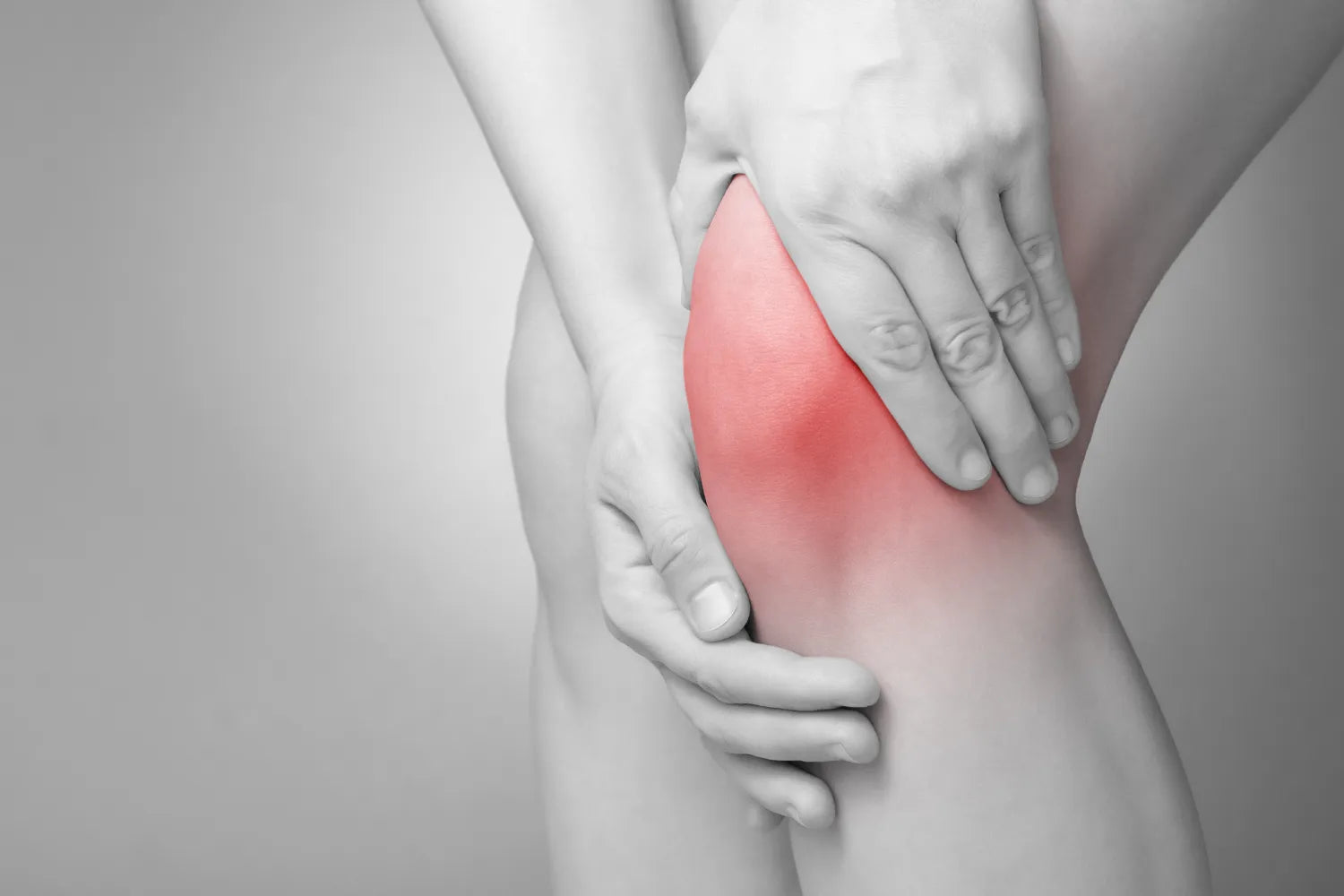What Causes Sudden Knee Pain?
Knee pain, whether a nagging ache or a sudden twinge, can be challenging. As a complex structure that plays an essential role in almost every activity, from walking to climbing stairs or participating in your favorite sport, any discomfort in the knee can disrupt your quality of life.
However, you don't need to simply suffer through knee pain. Understanding the potential causes of your discomfort can help you take the first steps toward finding relief. We'll explore the common causes of sudden knee pain, how it's diagnosed, and a range of potential treatment options that can help you regain comfort and mobility in the knee.
What Is the Anatomy of the Knee Joint?
The knee joint is one of the largest and most complex joints in the body. It's the meeting point of the thighbone (femur), shinbone, and kneecap (patella), and it plays a pivotal role in supporting our everyday movements like walking, running, and bending the legs to sit.
Ligaments connect the femur and shinbone, providing stability and flexibility. Notably, the anterior cruciate ligament (ACL) and collateral ligaments control knee motion. The patella, in front of the joint, enhances the leverage of the quadriceps, or the front thigh muscle, while the hamstrings at the back balance this motion.
Inside the knee, the meniscus, a tough cartilage disc, acts as a shock absorber between the femur and shinbone, distributing body weight evenly. Small fluid-filled sacs, or bursae, reduce friction and cushion pressure points around the knee, aiding smooth movement.
In short, understanding the knee's structure can help identify potential sources of discomfort. Each component plays a specific role, and when working together, they enable comfortable movement. This knowledge is essential for maintaining knee health and seeking appropriate care.
What Can Cause Sudden Knee Pain?
There's no one-size-fits-all reason for knee pain — it can stem from various issues, each with unique characteristics. Let's dive into some of the common causes of knee pain.
Overuse and Sports Injuries
Overuse and sports injuries are common in athletes — knee injuries often result from repetitive motion or sudden changes in direction. Pain in the knee can stem from injuries such as sprains or damage to the ligaments, tendons, or meniscus, and conditions like runner's knee and jumper's knee.
Injuries to the anterior cruciate ligament (ACL) or collateral ligaments, for instance, are common in sports involving sudden stops or direction changes. These injuries, including sprains, can cause severe pain and instability in the knee. Meniscus tears can occur when the knee is twisted while bearing weight, leading to pain, swelling, and difficulty moving the knee.
Tendinitis
This refers to the inflammation of a tendon, often resulting from overuse or injury. In the knee, it can cause discomfort and tenderness just below the kneecap.
Bursitis
Bursitis is inflammation of the bursae, small, fluid-filled sacs that cushion the knee joint. Repetitive motion or prolonged pressure can lead to bursitis, causing discomfort and swelling.
Patellar Dislocation
Dislocation of the kneecap happens when the kneecap moves out of position, often due to a blow or sudden change in direction when the leg is planted on the ground. This can be very painful.
Baker’s Cyst
A Baker's cyst is a fluid-filled cyst causing a bulge and a feeling of tightness behind your knee. The discomfort can worsen when you fully flex or extend your knee or are active.
Certain Medical Conditions
Underlying medical conditions such as autoimmune disorders like rheumatoid arthritis or knee osteoarthritis can also lead to sudden knee pain. Symptoms may include persistent discomfort, swelling, and stiffness in the knee.
If such symptoms accompany your knee pain, a healthcare professional can help diagnose the condition and help formulate an appropriate treatment plan.
Understanding these common causes can help pinpoint what might be behind your knee discomfort.
How Is Knee Pain Diagnosed?
When knee discomfort strikes, a medical professional needs to determine the cause. A thorough examination can help uncover the root of the problem. This usually involves a physical exam where your doctor checks for swelling, pain, tenderness, warmth, and visible bruising. They may also move your knee into different positions to assess your range of motion and stability.
Diagnostic tools like an X-ray can provide a clear picture of the bones and cartilage in your knee, which is particularly useful in detecting issues like osteoarthritis or a fractured kneecap. In some cases, advanced imaging tests like MRI or CT scans might be required to get a more detailed view of the knee's structures.
Blood or joint fluid tests can also identify specific types of arthritis or other conditions. By combining these diagnostic tools, medical professionals can accurately diagnose knee problems and guide you toward appropriate treatment options.
How To Find Relief From Knee Discomfort
When it comes to finding relief from knee discomfort, there are several options you can explore.
RICE Method
The RICE (rest, ice, compression, elevation) method is a simple self-care technique that helps reduce swelling, ease discomfort, and speed up healing. Rest is essential to prevent further injury. Using an ice pack can help to reduce swelling and numb the area. Compression with a bandage can provide support, and elevation helps reduce swelling by encouraging fluid drainage.
Stretching Exercises
Stretching exercises can be beneficial for knee discomfort. They help to improve flexibility, strengthen the muscles around the knee, and promote better movement. Examples include the hamstring stretch, quadriceps stretch, and calf stretch. These exercises can help maintain knee stability and reduce tension.
A physical therapist can provide added support by designing a personalized exercise program that suits your specific needs. They can guide you through the exercises, ensuring you're performing them correctly and safely.
Knee Braces
Knee braces are a non-invasive solution that can provide support and stability to the knee, helping to alleviate discomfort. They come in various forms and sizes, each designed for a specific purpose. Some braces offer compression to reduce swelling, while others provide structural support for unstable knees. By limiting certain movements and providing pressure where needed, knee braces can help manage discomfort and aid in recovery.
Use of Medications
OTC medications such as nonsteroidal anti-inflammatory drugs (NSAIDs) and ibuprofen can be utilized to manage discomfort and alleviate swelling associated with knee pain. These medications primarily serve as a short-term support mechanism, temporarily relieving acute symptoms.
Of course, it's important to note that they do not address the underlying cause of the discomfort. Moreover, the potential side effects, which can range from mild to severe, mean that NSAIDs are not suitable for everyone. Always consult a healthcare professional before starting any new medication regimen to ensure its safety and appropriateness for your health.
Role of Sports Medicine
Sports medicine is essential in managing knee discomfort, particularly in athletes. If knee pain is related to an athletic injury, sports medicine specialists can provide a comprehensive treatment plan that includes injury diagnosis, treatment, rehabilitation, and prevention education. They work closely with physical therapists, orthopedic surgeons, and other healthcare professionals to ensure you get back on your feet, ready for action.
Steroids and Surgical Options
In more serious cases, interventions like steroid shots and knee replacement surgery may be considered. Steroid injections can provide temporary relief by reducing inflammation. However, they're typically a short-term solution. Knee replacement surgery, on the other hand, is a more invasive procedure where the damaged knee joint is replaced with an artificial one. It's usually considered as a last resort when other treatments have not provided sufficient relief.
How Can CBD Help Ease General Feelings of Discomfort?
CBD interacts with the body's endocannabinoid system (ECS), a complex cell-signaling system that plays a role in maintaining homeostasis throughout the body.
The ECS comprises three core components: Endocannabinoids, cannabinoid receptors (CB1 and CB2), and enzymes. Endocannabinoids are naturally produced in the body and are similar in structure to cannabinoids like CBD. These endocannabinoids can bind to CB receptors to signal the ECS to take action.
CB receptors are located throughout the brain and body, including in muscles and joints. When endocannabinoids bind to these receptors, they trigger biological functions that can respond to stress levels, sleep patterns, and feelings of discomfort. Then, enzymes in the ECS break down endocannabinoids once they've carried out their function.
CBD's molecular similarity to endocannabinoids allows it to interact with this system effectively.
Topicals like our CBD Balms are applied directly to the skin, allowing the CBD to interact with nearby CB receptors at the source of discomfort and offer a targeted approach to maintaining comfort and wellness.
Beyond localized support, consumable forms of CBD, such as cannabidiol drops and CBD gummies for muscle relaxation, can work systemically with the ECS. They can help maintain healthy stress levels, support sleep patterns, and support balanced immune function. These aspects are essential for keeping the body relaxed and comfortable.
Ultimately, CBD offers another tool in your wellness toolbox, empowering you to actively manage your well-being if you’re dealing with general discomfort.
What Are Some Tips for Preventing Knee Discomfort?
Preventing knee discomfort can be achieved through a combination of lifestyle choices and wellness practices.
Here are some proactive steps you can take to protect your knees:
-
Regular Exercise: Engaging in regular physical activity can strengthen the muscles that support your knees, reducing the risk of injuries. Choose exercises that are gentle on the knees, like swimming or cycling.
-
Stretching: Incorporating stretching into your routine can help maintain flexibility and range of motion. This can prevent stiffness and enhance joint mobility.
-
Healthy Weight Maintenance: Keeping a healthy weight reduces the load on your knees, decreasing the risk of overuse injuries and conditions like osteoarthritis.
-
Balanced Diet: Consuming a nutrient-rich diet can support knee strength and overall joint health. Foods rich in omega-3 fatty acids, vitamins C and D, and calcium can be particularly beneficial.
-
Hydration: Staying well-hydrated is essential for joint health. It helps maintain adequate blood volume and allows nutrients to move through your blood to your joints.
-
CBD for Wellness: Incorporating CBD into your routine can be part of your preventive strategy. CBD can help ease feelings of stress, support muscle recovery, and encourage healthy sleep. These benefits can contribute to maintaining optimal immune function, easing feelings of discomfort throughout the body, and supporting overall wellness.
By implementing these strategies, you can take a proactive approach to knee health and potentially ease knee discomfort.
The Bottom Line
Understanding the knee and the common causes of knee discomfort can guide you in seeking the right help at the right time. There are multiple paths toward relief, from self-care methods like the RICE technique and stretching exercises to professional treatments such as physical therapy and medical interventions.
CBD, both as a response to sudden discomfort and as a part of your overall wellness routine, can be an effective tool to help keep you feeling your best. We invite you to explore our full range of CBD products at Muscle MX. Made with all-natural ingredients and rigorously third-party tested, our products are designed to support your wellness journey.
Sources:
Knee Joint: Function & Anatomy | Cleveland Clinic
Stretches and Exercises for Knee Pain, from a PT | HSS
The endocannabinoid system: Essential and mysterious | Harvard Health
Effects of Cannabidiol on Innate Immunity: Experimental Evidence and Clinical Relevance | PMC










































